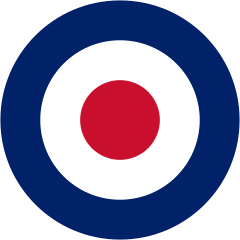The Incident

It is 21:00 at Elvington base in the UK, where 77 Squadron, Royal Air Force, is stationed. It is Sunday, April 23, 1944. The experienced crew in Halifax LL235 leaves the runway heading towards the Baltic Sea, tasked with laying mines.
After flying for 2 1/2 hours, they are now over Danish territory.
A German Messerschmidt bf-110 from Nachtjagergeswader 3 spots the bomber and opens fire. The plane is now over Northern Als and coming from the west over Svenstrup.
It is about 23:30 and the plane is on fire. The pilot, Flight Lieutenant Edward N. Thomsen, tries to make an emergency landing of the now burning bomber at Karlsminde, but the plane continues into the water and sinks several hundred meters off the coast.
The tail gunner miraculously survives the violent emergency landing. He has now been in the water for more than half an hour when two locals, fisherman Christian Hansen and Erik Agergaard, arrive. They manage to get Sergeant D.M.M. Harris out of the wreckage and onto land.
The other six crew members do not get out of the wreckage and drown. The pilot is found in the water near the wreck four days later, on Thursday, April 27. Four days later, on Monday, August 31, the mid-upper gunner, Gunner Sergeant Roy Redall, is found on the beach at Himmark, and they are both buried in Aabenraa cemetery.
The navigator, Pilot Officer Gerald McClelland, later washes ashore at Assens, where he is buried. The radio operator, Flight Sergeant Frederick W. Harvey, washes ashore at Fåborg and is buried in the town’s cemetery. Flight Engineer Sergeant J. Armstrong is not found.
The bomb aimer, Flight Officer Alfred E. Robbins, is also not found, but it is highly likely that he is the one who washed ashore at Havnbjerg Forest. As he did not carry ID tags, he is buried as unknown in Aabenraa cemetery.
Shortly after, large parts of the sunken plane are raised, as well as the load of mines. Many items, however, remain on the seabed and are still there.
In April 1972, persistent sports divers manage to raise one of the plane’s four propellers, which is now kept by the Air Home Guard.
The Crew

- Pilot, Flight Lieutenant Edward N. Thomsen, Distinguished Flying Cross
- Navigator, Pilot Officer Gerald McClelland, Distinguished Flying Medal
- Bomb Aimer, Flying Officer Alfred E. Robbins, Distinguished Flying Cross
- Wireless Operator, Flight Sergeant Frederick W. Harvey
- Flight Engineer, Sergeant J. Armstrong
- Mid Upper Gunner, Sergeant Roy Redall
- Rear Gunner, Sergeant D.M.M. Harris, survived the crash and was taken prisoner of war by the Germans
Halifax Mk. V, LL235, 77 Squadron, Royal Air Force, with crew and ground personnel in April 1944
The memorial stone erected at Traneodde

The Bomber
The various versions of the Halifax bomber flew 82,773 bombing sorties and dropped 224,207 tons of bombs. 1,833 aircraft were lost.
In addition to its primary service as a bomber, the aircraft also served as a glider tug, for electronic warfare, and for dropping weapons and agents in the occupied countries in Europe.
The Royal Air Force also used the aircraft for anti-submarine warfare, reconnaissance, and meteorological tasks.

| Aircraft Type: | Heavy Bomber |
| Manufacturer: | Handley Page |
| First Flight: | October 25, 1939 |
| Entered Service: | November 13, 1940 |
| In Service With: | Royal Air Force Royal Canadian Air Force Royal Australian Air Force |
| Number of Engines: | Four 1,280 hp Merlin engines |
| Total Aircraft Built: | 6,178 (904 Mk. V) |
| Armament: | 9 x 7.7 mm machine guns |
| Bombs: | Max. 5,897 kg |
The Base
After the war, Elvington base was extensively developed for use by the US Air Force and was used until 1992 when it was decommissioned as an operational airbase

Many buildings have been preserved and stand as they did during World War II, in the correct paint scheme.
Today there is an aviation museum at Elvington base, and the collection even includes a Halifax bomber.

The runway was declared ready on October 8, 1941, and agreements were made with the village of Elvington regarding the accommodation of 2,800 men. In September 1942, the station was taken over by Bomber Command, which had its headquarters two miles away at Heslington Hall.
The first operation from the base was directed at Lorient in France on February 4-5, 1943, with 11 Halifax bombers. Later, bombing and mine-laying missions were carried out by 77 Squadron with a force of 18 Halifax Mk. V aircraft. The missions were carried out with an average loss of about four percent, though higher when the target was Berlin.
In May 1944, there were enough Free French aviators in Bomber Command to form their own bomber squadron. They were stationed at Elvington and 77 Squadron was moved to a new airfield at Full Sutton.
After the war, Elvington was developed as a United States Air Force base for the Supreme Allied Commander Europe with B-47 aircraft. The over 3000-meter-long runway is still in use, among other things for annual air shows, and is one of the longest runways in the UK.
